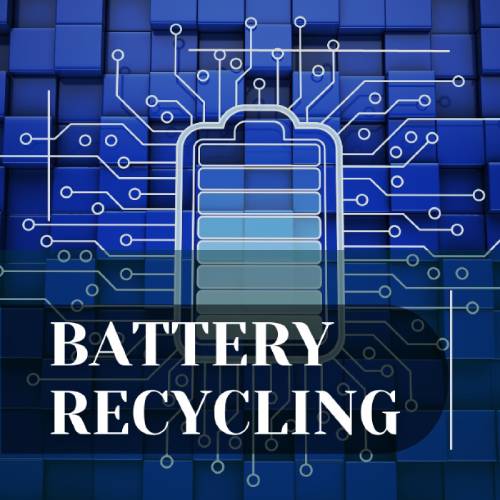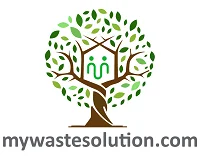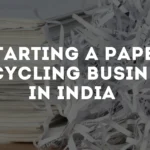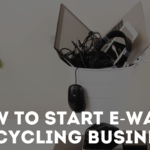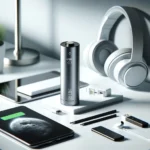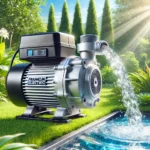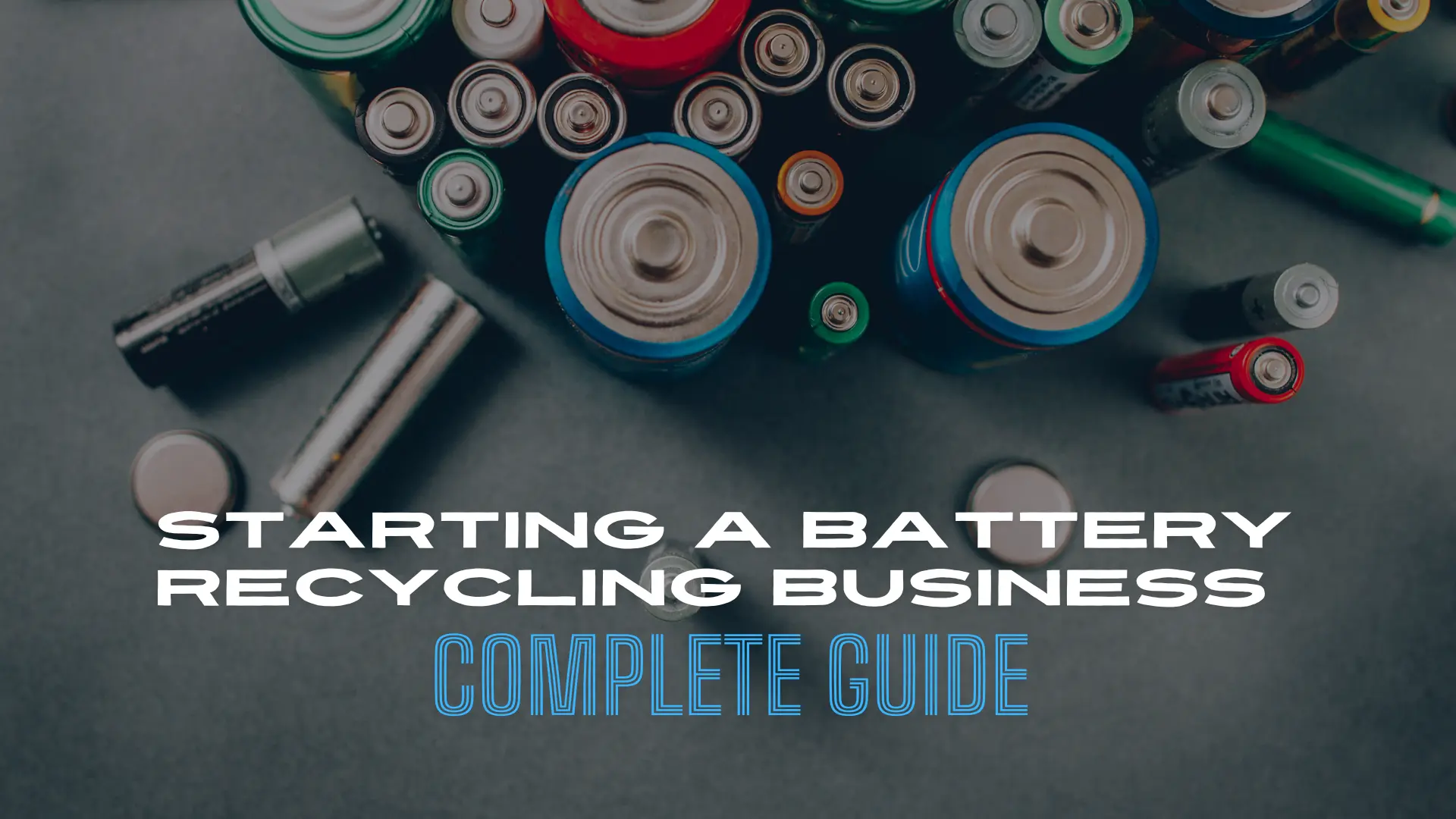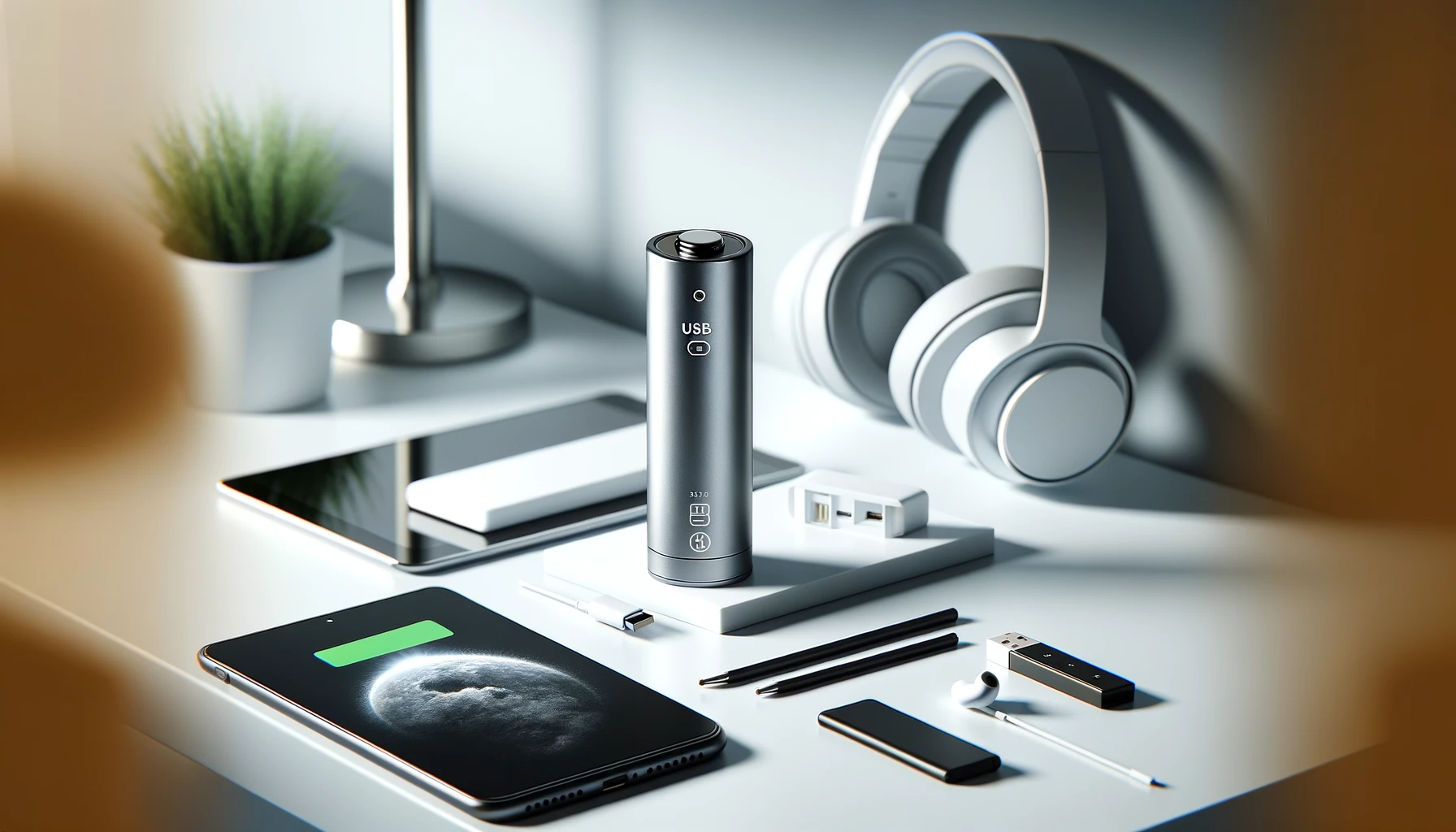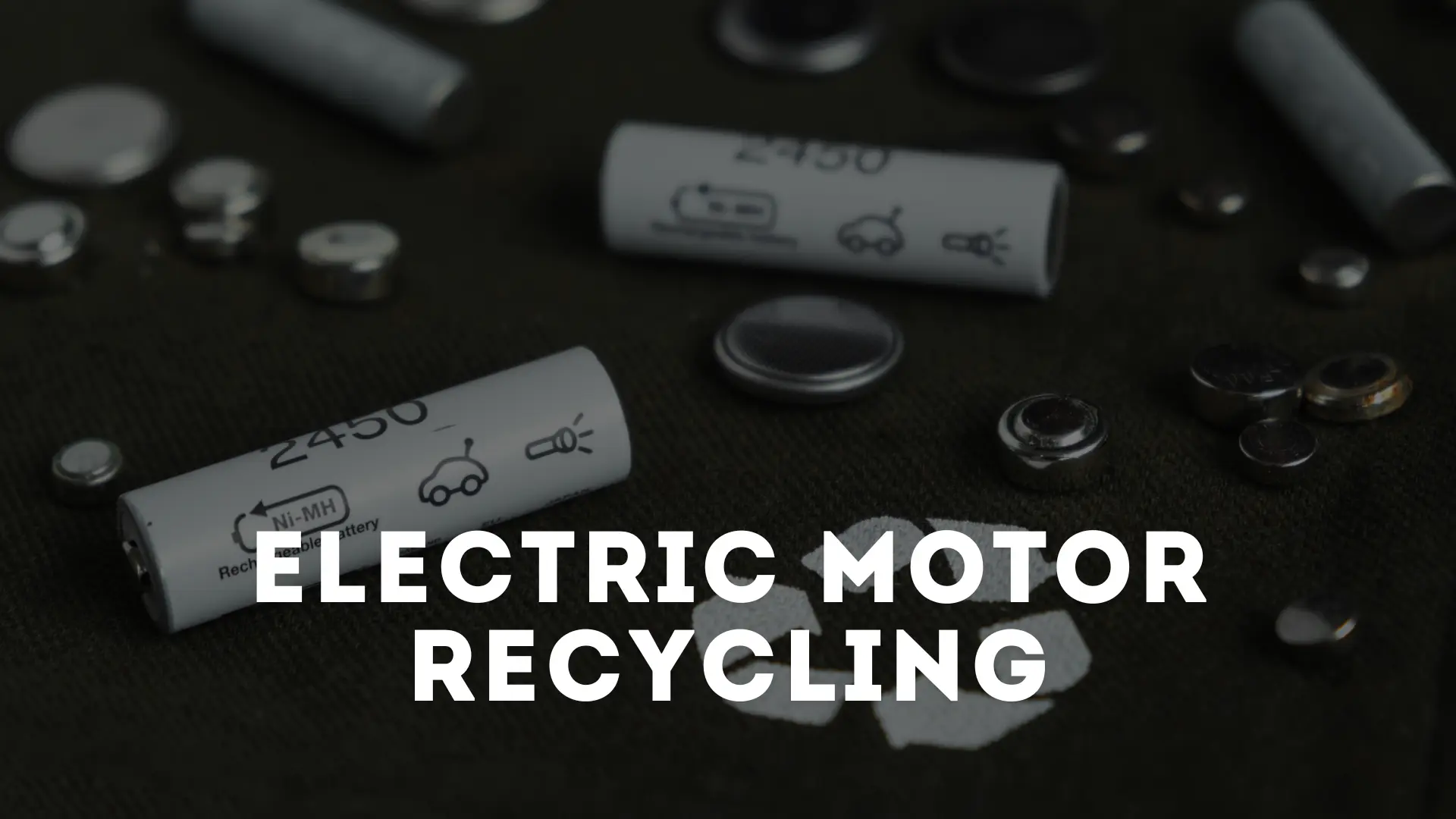How to start a battery recycling business?
If you want to know how to start a battery recycling business you are at the right place! Battery is one of the most important e waste. E waste stands for electronics waste. There are different types of e waste; batteries are one of the major concerns for the environment. Electronic waste recycling and electronic waste disposal are two major aspects of waste management. There are different e waste recycling processes depending on the different e waste recycling plants. Let’s move further into blog and know about e waste management .
Recycling has become the need of the hour, thus making way for entrepreneurial opportunities. There are battery recycling businesses around, which directly contribute to attaining sustainability and saving our dearest mother earth. Battery recycling business stands as one of the most important parts of the recycling endeavour, in the current state.
We all know recycling comes into action when we use a commodity to its maximum potential and then discard it. Since India is still transitioning towards EV’s (Electric Vehicles), the use of lithium-ion batteries will tend to increase. Thus battery recycling business will become a necessity. When enough batteries are available for recycling, starting the battery recycling business will take off as soon as there is enough material. Many batteries in devices and EVs have reached or are close to their shelf life.
At this point, you might be wondering how batteries can turn out to be a great option for business. And even if they are, how can one start a battery recycling business? Well, if you wanna know more, and about the battery recycling business, keep reading…..
Why battery recycling business?
Battery recycling business aims to reduce the number of batteries ending up in landfills. Batteries comprise hazardous elements like cobalt, nickel, and lithium. As a result, it’s a concern for the environment ; when we disposed of batteries like household waste. It is important to conduct several assessments before starting a battery recycling business, even though energy storage may seem like a promising solution to environmental problems.
The challenges in shifting towards battery energy include environmental hazards, geopolitical risks, and limited sources. Thus, a well flourished or well-established battery reuse/recycling ecosystem can tap in as a great option for a circular economy. The government of India’s goal to shift to clean energy brings endless opportunities for energy storage in India.During the last few years, the comprehensive market for cells, especially lithium-ion batteries (LIBs), has grown exponentially, mostly in the automobile industry due to the use of LIBs in electric cars. The lithium-ion battery recycling market is expected to grow at a 35.0% CAGR between 2021 and 2030 due to rising lithium demand.
Different battery types
Before start with battery recycling business one must know the types of batteries and their recycling process. Let’s begin with the types of batteries.
The batteries are mainly of primary and secondary types.
- Primary batteries:
Primary batteries are used and throw kind, which means they cannot be recharged with electricity or reused like the secondary batteries. In primary batteries, the photochemical reaction cannot be reversed. Every year around 15 billion batteries are discarded worldwide, whose final destination is the landfill.
Eg: button cells, AA cells, coin cells.
- Secondary batteries:
Also known as a rechargeable battery. Secondary batteries can be used to their maximum potential and yet recharged and used again. Secondary batteries compose of more than one photochemical cell. These batteries are slightly on the pricier end than those disposable batteries.
Eg: Lithium-ion battery (Li-ion/LIB), Nickel cadmium battery (Ni-Ca), Lead acid battery(LAB), and Nickel metal hydride battery(NiMH).
| Primary batteries | Secondary batteries |
| Non-rechargeable batteries Button cells ( silver oxide) AA cells Coin cells | Rechargeable batteries Lithium-ion batteries Lead acid batteries Nickle cadmium batteries Nickle metal hydride batteries. |
Explore E-Waste Solutions
Find top machinery, plants, tools, resources, companies, and consultancy for comprehensive E-Waste Solutions.
Recycling Process
To begin with the battery recycling business one must understand the recycling process. Let us briefly discuss the recycling processes of some of the most commonly used batteries!
Commonly used batteries are:-
- Lithium-ion battery
- Lead acid battery
- Nickel-cadmium battery
- Silver oxide batteries
Lithium-ion battery recycling:
Before beginning with the recycling of lithium-ion batteries, one must know what lithium-ion means. Lithium-ion batteries are composed of various chemicals like lithium cobalt, graphite, copper, nickel, steel, aluminum, and electrolyte.
Lithium-ion batteries have a variety of recycling processes i.e pyro metallurgical, hydrometallurgical, and direct recycling. For more information on this, connect with our lithium ion battery recycling consultants here.
| Recycling Process | Description |
| Pyrometallurgy | For pyrometallurgy, a smelter is used (high-temperature furnace) which gives an alloy of cobalt, nickel, and copper. Pyrometallurgy is a simple and mature process, where sorting and reduction are not a necessity. Although pyrometallurgy may seem feasible it has its drawbacks, like high generation of Co2 and utility of energy during the smelting process. The alloys obtained also require further treatment which in turn increases the cost of recycling. |
| Hydrometallurgy | Hydrometallurgy follows bioleaching where steps like chemical precipitation, electrochemical deposition, solvent extraction, purification, ion exchange, etc take place. These methods lead to the recovery of cathode material from discarded LIBs. In hydrometallurgy, most of the lithium-ion battery’s constituents can be recovered, unlike pyrometallurgy. Hydrometallurgy requires low temperatures and the expenditure is low as well. This method is environmentally friendly as it releases less amount of CO2. But hydrometallurgy comes with its challenges like separating elements (Co, Ni, Mn, Fe, Cu, and Al) from the ore. |
| Direct recycling | This recycling type stands to be the most sustainable and cost-effective of all methods. Direct recycling initially involves shredding the battery without breaking down the chemical composition of active metals. Direct recycling includes processes like electrochemical process, hydrothermal process, and solid-state synthesis. Direct recycling proves to be the most sustainable because it recovers the functional cathode without any precipitation of the entire particle. |
Lead acid batteries:
Although lead-acid batteries have a low life span, they are highly rechargeable and recyclable. 90℅ of the components of a lead acid battery can be recovered by using the right recycling technique. Because of these reasons lead acid battery disposal industry has grown in volume. But this definitely does not mean that these batteries can be discarded in household bins. If the components of LAB leak out, after irresponsible disposal, they can cause severe damage to the environment.
So what happens to these batteries once discarded at their rightful place?
Once the batteries are collected by the recycling unit, they are sent to a hammer mill, where these batteries are literally crushed. The main components of these batteries are polypropylene (the plastic coating), sulphuric acid, and obviously as the name suggests (lead-acid batteries) lead. Sulphuric acid is converted to sodium sulphate, which is then used as a component in detergents and fertilizers. The lead and propylene are sent furthermore, where polypropylene and lead are separated. The plastic coating and recovered lead are used to make new batteries yet again.

Nickel-cadmium batteries:
Nickle cadmium batteries are rechargeable, and we use them in our remote controls, wall clocks, drills, and other small battery-operated devices. These are easy-to-carry batteries. These batteries have high power and low shelf life. Nickle cadmium batteries generally comprise nickel oxide hydroxide and metallic cadmium (electrode). Each battery comes with its unique battery makeup, thus it has a different recycling process.
Nickel is recycled from the Ni-Cd (Nickel Cadmium) batteries by separating the components of the battery (nickel, acid, plastic) before the metallurgical process. The separation of the components of a Ni-Cd battery is similar to the crushing of the lead-acid battery. Ni-Cd battery can be alternatively recovered entirely through heat treatment in a furnace, with metals recovered at the end of the process.

Struggling with E-Waste issues? Connect with top consultants specialising in E-Waste Recycling.
Connect Now
Silver oxide batteries: (Primary cell)
These are mostly a form of button cells, which are commonly found in calculators, wristwatches, toys, etc. These batteries are usually small in size but have long storage and can function even at low temperatures.
Silver oxide batteries generally have mercury as well, as an element, which apparently makes their recycling mandatory. Silver oxide batteries are generally shredded during the recycling of heavy metal present in them. These shredded pieces are then sent to the tumbler reactor, after which chemical transformation and drying blending takes place.
Thus reproducing new silver oxide battery cells.
Rules and regulations for battery recycler
- The recycler must apply for registration with the Ministry of environment, forest, and climate change.
- Submit annual returns report to respective state pollution control board by 30th June and 31st December Every year.
- Submit all available records related to the receipts of the used batteries, sources (from where the batteries came in for recycling), quantity (amount/numbers of batteries that came in for recycling), and the metal yield; to the respective state pollution control board.
- Mandatorily mark “recycled” on the recovered metals by recycling.
- The central recycling unit should be developed with a capacity of more than 10,000 tons/year to make appropriate pollution control.
- One must ensure strict adherence to the terms and conditions of the registration.
- The recycler must create awareness among civilians regarding the recycling of batteries via advertisements, publications, or others in regard with :
- Responsible disposal of used batteries means returning batteries only to authorized recyclers
- Explaining hazards of heavy metals present in batteries.
Documents required for registration to start a recycle business:
Compliance for battery recycling business is proposed by central pollution control board(CPCB).
Now let’s move on to the must-haves!
Firstly the recycler has to register himself/herself to start a battery recycling business with the Ministry of Environment, Forest and Climate Change.
- Authorized Aadhaar card
- Authorized pan card
- Valid GST certificate
- Lease/ proof of ownership of the site of a recycling
- Detail flow chart of recycling
- Copy of valid registration certificate with MoEFC
- Copy of proof of installed capacity as per state pollution control board.
Machines used for battery recycling:

- Shredder: The system is employed to crush mostly used lithium-ion batteries to continue the process.
- Granulator: This machine shreds previous batteries into smaller items, creating them easier to move.
- Pyrolysis system: this system is a lot of of a filtration technique that removes diaphragms, electrolytes, organic materials, and alternative contaminants from the cells
- Separator: This machine separates the bimetal element from cells.
- The tail gas treatment system:Tail gas refers to the air released after an industrial air, this system is used to treat the air effluent formed after the recycling process.
Find and connect with leading companies specializing in E-Waste solutions.
Get Connected Today
Expenditure to step up a battery recycling plant:
Figures mentioned here are rough and might vary depending on the area of the plant, manpower employed, and amount of batteries recycled per year.
- Expense of the facility will minimally go up to 75,000/- to 85,000/- per month
- Drop off unit charges: 50,000/- to 60,000/-.
Note: these can be cut off if you can collect it in the form of dumpster, which is comparatively less expensive.
- Amount of machineries mentioned earlier: 5L to 8L.
- Labour charges: 300 to 400/day
- Other utilities :50,000 to 70,000 /month.
There are various grants and schemes available for small-scale industries from the government, which can reduce the cost of setting up the plant even furthermore.
Battery recycling companies in India:
Ever since the demand for batteries mentioned above increased,supply of batteries also need to be balanced. If the usage of the core material is not bought to a normalised limit, solving one problem might lead to another. So to make sure that most the batteries dont end up in landfills, certain companies have a step forward for recycling these lifeless batteries.
Some the battery recycling companies are mentioned below.
- EcoReco
- EcoTantra
- Umicore
- TATA Chemicals Limited
- TES-AMM
- Exigo
- EXIMO recycling and many more.
Challenges in battery recycling:


Explore the Best E-Waste Recycling Machinery and Plants for your Industrial Needs.
Connect TodayAs much as the battery recycling has its benefits, it comes with its own challenges. Let us briefly discuss the challenges involved in recycling.
- Evolving battery design
The changing designs of the battery cause a lot of problems during recycling. Batteries are now come in various enclosures: cylindrical, prismatic and pouch cells. Cylindrical cells come in various shapes. Prismatic cells come in rectangular and rigid. Pouch cells come in various sizes and do not have a standard size in the industry. These different sizes of batteries cause a considerable problem in disassembling the batteries and during pre-treatment.
- Evolving battery materials
Constantly changing cathode and anode, due to mixing of 2 or more different types cathode/anode materials to obtain desirable performance from the batteries. Recycling these mixed materials is avoided due to their low added value.
- Economic benefits
Battery recycling mainly rely on the value obtained from cathode, acquired from the batteries. However, the cobalt in the cathode is intentionally degraded to new cathode material chemistries thus making LIB recycling more challenging economically.
- Recycled Battery materials requirement
It becomes a task to convince the large manufacturers to accept the recycled battery materials into their production system. They need to be assured about the performance of the recycled material is equivalent to that of the virgin material used for production of the batteries.
Struggling with E-Waste Issues? Connect with Top Buyers and Sellers specialising in E-Waste.
Buyer Listings Seller ListingsWrapping up:
It’s time to recharge yourself, and start with the battery recycling business!
The surge in battery production will eventually lead to more batteries ending up in landfills. This is when battery recycling comes into action. As India is stirring vigorously towards EV, the battery recycling business is sure to flourish.Not only in India but globally the demand for LIB is expected to shoot up by CAGR 36℅ from 2021 to 2030 reaching 38.21 billion. Battery recycling will not only have economic benefits but also environmental benefits, preventing the leakage of heavy metals into the environment. Battery recycling plants will also enhance employment opportunities. With government aid settling up a recycling plant won’t be hefty as well, this surely increases your chance of trying your hand at battery recycling business. Connect with the best battery waste management consultants here.
Also Read about Advantages of recycling e waste
FAQ’s
Ques 1 : Why battery recycling?
Answer : When there is demand for batteries, the battery production also increases. once these batteries are exploited to their potential they end up into the dumps. If these discarded batteries are not recycled, the heavy metal from these batteries seeps into the ground contaminating ground water and also the soil. Thus battery recycling is quite necessary.
Ques 2 : How to start a battery recycling business?
Answer: Starting a battery recycling business is quite simple only if you have certain things in place. For starting a battery recycling business one must register with MoEFC and state pollution control board. For registration you may need id proof, proof of lease or ownership of the site, detail flowchart of recycling process, and a copy of filled registration form. You also need proper machinery and equipment, and labour.
Ques 3 : Can batteries be 100℅ recycled?
Answer : Lead or lead acid batteries (LAB) have 95℅ of recyling rate among all the batteries.
LAB recycling is comparatively cheaper, as recovered lead is again used in production of new batteries.
Ques 4 : What are the types of batteries?
Answer : Batteries are mainly of 2 types viz primary batteries and secondary batteries. Secondary Batteries are the ones which can be recharged whereas primary batteries are non rechargeable.
Ques 5 : What LIB and LAB stand for?
Answer : LIB stands for lithium ion batteries, which are commonly used in electric vehicles
LAB stands for lead acid batteriea which recyclable up to 95℅.
Ques 6 :Which machines are used in battery recycling?
Answer : Machines and equipments like shredder, granulator, pyrolysis system, separator and tail gas system are used in battery recycling process.
Ques 7 : Which are the commonly used primary batteries?
Answer : Button cells like silver oxide are the most commonly used primary batteries. These Silver oxide cells are used in wrist watches, calculators, toys etc.
